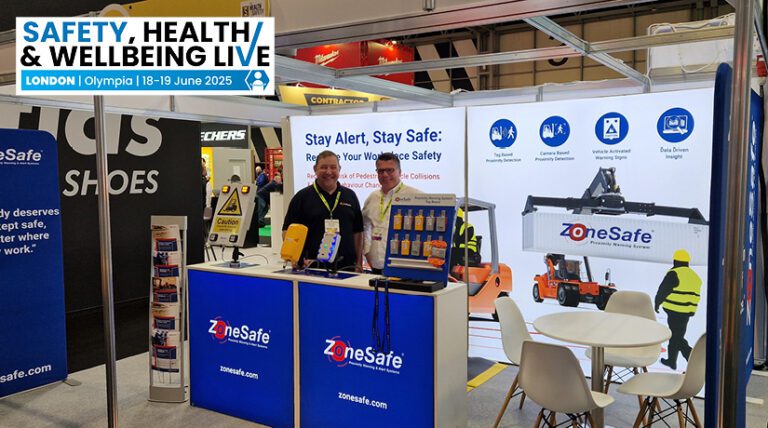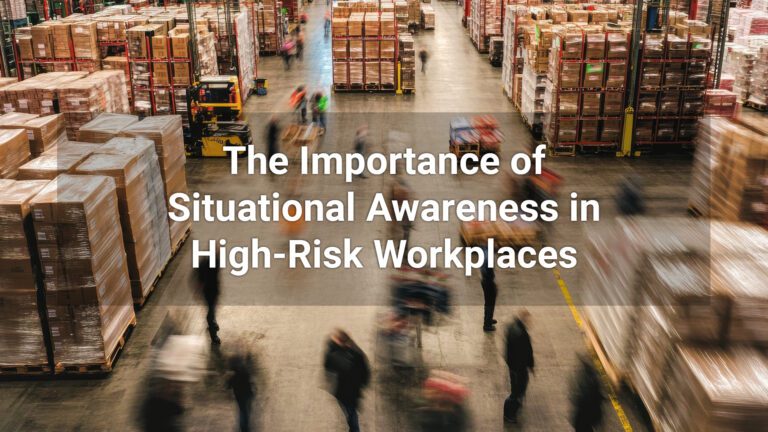Ensuring Workplace Safety: Vehicle and Pedestrian Segregation
Promoting the safe coexistence of vehicles and pedestrians within workplace environments is essential. Implementing effective segregation through thoughtfully designed routes reduces accident risks and improves operational efficiency. This guide details key strategies for creating safe, segregated pathways suitable for permanent business sites and temporary workplaces like construction zones, logistics centres and waste and recycling sites.
Conducting Risk Assessments for Safe Segregation
A thorough risk assessment forms the cornerstone of a robust traffic management system. This process identifies hazards, evaluates risks, and establishes control measures to prevent incidents. Key factors to consider include:
Vehicle Safety Considerations:
- Assessing Site Access: Determine if vehicles cross major roads to enter or exit, and explore alternative routes where feasible.
- Managing Entry and Exit Points: Use barriers or gates to control site access, ensuring they are safe and easy for drivers to operate. Secure gates when open.
- Optimizing Driver Visibility: To enhance visibility, ensure clear sightlines for drivers and avoid landscaping that may obstruct views at junctions. To do this, use wire mesh fencing instead of solid walls.
- Reducing Reversing Risks: Implement one-way systems and designated turning points to minimize reversing needs.
- Designing Safe Traffic Routes: Construct routes with durable materials appropriate for expected traffic loads, ensuring good drainage, firm surfaces, and sufficient width.
- Enhancing Route Safety: Avoid routes that intersect with pedestrian entrances, blind spots, sharp bends, and steep slopes. Install mirrors where visibility is limited.
- Addressing Height Restrictions: Identify and manage areas with overhead obstructions such as cables or pipelines.
Pedestrian Safety Measures:
- Physical Separation Strategies: Provide dedicated footpaths or walkways, appropriately sized for pedestrian volume.
- Establishing Safe Crossings: Implement clearly marked pedestrian crossings that are visible to both drivers and pedestrians. In high-traffic zones, use traffic lights, subways, or bridges.
- Protective Barriers: Install barriers at entrances and exits to prevent pedestrians from accidentally entering vehicle pathways.
- Designated Entry Points: Ensure separate access points for pedestrians and vehicles into buildings.
- Managing High-Traffic Periods: Restrict or control vehicle movement during peak pedestrian times (e.g., shift changes, lunch breaks).
- High-Visibility Apparel: Require pedestrians to wear high-visibility clothing in areas where vehicles operate.
Effective Signage and Road Markings for Ensuring Workplace Safety
Clear signage and road markings are vital for guiding both pedestrian and vehicle movements:
- Compliance with Signage Standards: Follow The Department of Transport Traffic Signs Manual Chapter 7 for more information.
- Enhancing Visibility: Use reflective or illuminated signs for improved nighttime visibility. Position signs for optimal visibility and reaction time.
- Providing Navigational Aids: In large facilities (e.g., factories, ports), display maps at key locations to assist navigation.
Implementing Traffic Control and Speed Management
Controlling vehicle speeds effectively reduces accident risks:
- Establishing Speed Limits: Set appropriate speed limits based on site layout, vehicle types, and load considerations. Adapt limits for different site areas as needed.
- Monitoring and Enforcement: Utilize markers, CCTV, and speed sensors to ensure compliance.
- Introducing Traffic Calming Measures: Implement speed humps, rumble strips, narrow lanes, or raised curbs to manage speeds.
- Deploying Alerts and Warnings: To enhance safety, audiovisual systems, such as flashing signs, traffic lights, and audible alarms, should be used.
Developing Safe Work Systems
Create a comprehensive traffic management plan based on-site assessments. Essential components include:
- Orientation for Drivers: Ensure visiting drivers understand site rules, reporting procedures, and designated routes.
- Clear Communication: Effectively communicate traffic layouts to all employees, contractors, and visitors.
Regulatory Compliance and HSE Guidelines
As per The Health and Safety Executive (HSE) regulations:
- Legal Responsibilities: Traffic routes must allow safe, hazard-free use by both vehicles and pedestrians.
- Mandatory Separation: Where possible, keep roadways and footpaths distinct. Vehicle routes should be positioned safely away from pedestrian access points.
Risk Assessment Checklist
When conducting a risk assessment, consider the following questions:
- How are pedestrians separated from vehicles?
- How are vehicle and pedestrian areas clearly marked?
- Where do shared routes exist, and how are they managed?
- How are crossing points designated and communicated?
- How is site layout information shared with staff and visitors?
- What additional risks exist beyond collisions (e.g., falling materials, noise, fumes)?
Guidelines for Effective Segregation
- Provide separate entry points for vehicles and pedestrians.
- Use door windows to improve visibility.
- Clearly mark indoor vehicle routes with signs and floor markings.
- Ensure ample clearance to prevent trapping hazards.
Managing Situations Where Segregation Is Not Feasible
In cases where segregation isn’t possible:
- Alternative Safety Solutions: Implement audible alarms and visual alerts to warn of vehicle-pedestrian proximity.
- Addressing Noise Challenges: In noisy environments, complement sound alerts with visual indicators.
Advanced Safety Technologies
- ZoneSafe Safety Systems: ZoneSafe technology creates detection zones around vehicles, equipment, and pedestrian pathways. Active tags trigger audio-visual alerts when entering these zones, ensuring workplace safety even in blind spots or low-visibility conditions.
For more information, visit our range of Annäherungswarnsysteme to see how they can ensure workplace safety on your worksite.




